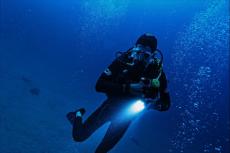Divers discover 1,600-year-old Roman shipwreck
Two divers uncovered Israel's biggest find of underwater Roman-era artifacts in three decades, archaeologists said on Monday. The ancient shipwreck was found in the shallow waters of the ancient Roman port of Caesarea, on the Mediterranean Sea.
The treasures were first spotted in late Apri by divers Ran Feinstein and Ofer Raanan but it took an underwater survey conducted in recent weeks to reveal the extent of the find.
As soon as they emerged from the water divers Ran Feinstein and Ofer Ra‘anan of Ra‘anana contacted the Israel Antiquities Authority and reported the discovery and removal of several ancient items from the sea.
A joint dive at the site together with IAA archaeologists revealed that an extensive portion of the seabed had been cleared of sand and the remains of a ship were left uncovered on the sea bottom: iron anchors, remains of wooden anchors and items that were used in the construction and running of the sailing vessel.
Ancient artefacts
Divers found a bronze lamp depicting the ancient Roman sun god Sol, a statue of the moon goddess Luna, fragments of jars, and more. One of the most significant finds was two metallic lumps weighing approximately 40 pounds (18 kilograms) and made up of thousands of ancient coins, fused together in the shape of the pottery vessel in which they were held.
Some of the objects date to the fourth century, while others are from the first and second centuries, said Jacob Sharvit, director of marine archaeology at the IAA.
After possibly encountering a storm, sailors dropped the anchors to try to save the ship, Sharvit said, but all their attempts failed; the ship drifted and all its cargo plunged into the water at Caesarea and remained there for 1,700 years.
- Log in to post comments






























